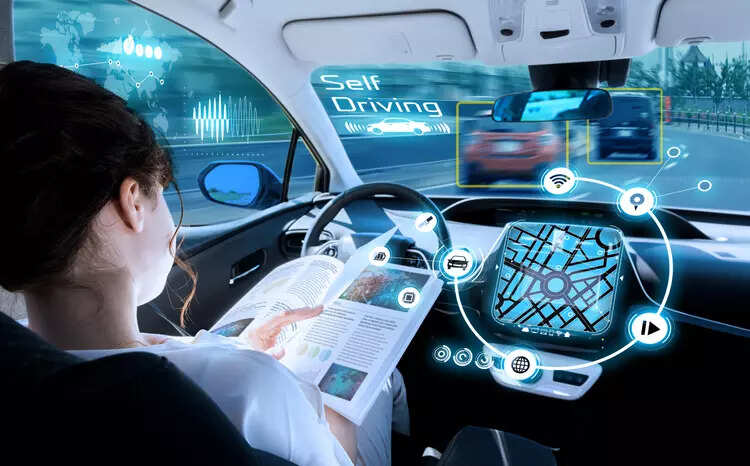
The global Electric vehicle market is expected to grow in the next few years as many countries are aiming for net zero emissions by 2050. In India, the governing bodies have introduced policies and incentives to encourage the use of electric vehicles. In addition, e-commerce firms, automobile manufacturers, app-based transportation network companies, and mobility solution providers have entered the market and are gradually increasing EV capacity and visibility. The mainstream Indian passenger vehicle market is witnessing the onset of vehicles with certain autonomous driving features like Mahindra XUV 700 (L1.5), and MG Astor (L2). Industry leaders believe the trend is going to catch up in the coming years.
- What is an autonomous vehicle?
A self-driving car is one that is capable of sensing its environment and operating without the assistance of a human. A human passenger is not necessary to take control of the vehicle at any point, nor is a human passenger required to be present in the vehicle at all. - What are the levels of autonomy in autonomous vehicles?
According to SAE International, there are 6 levels of autonomy. It ranges from 0 to 5 depending upon the autonomous control over vehicle. - What is Level 0 autonomy?
Level 0: No Driving Automation
The human driver is responsible for all actions required for driving the vehicle. - What is Level 1 autonomy?
Level 1: Driver Assistance
A vehicle’s advanced driver assistance system (ADAS) can sometimes help the human driver with steering or braking/accelerating, but not both at the same time. - What is Level 2 autonomy?
Level 2: Partial Automation
In some cases, an advanced driver assistance system (ADAS) on the vehicle can manage both steering and braking/accelerating at the same time. The human driver must maintain complete concentration and execute the rest of the driving duty. - What is Level 3 autonomy?
Level 3: Conditional Driving Automation
Under certain conditions, an autonomous driving system (ADS) on the vehicle can perform all parts of the driving task. In those situations, the human driver must be prepared to reclaim control at any time when the ADS requests it. In all other cases, the human driver is in charge of driving. - What is Level 4 autonomy?
Level 4: High Driving Automation
In certain circumstances, an automatic driving system (ADS) on the vehicle can conduct all driving functions and monitor the driving environment – in other words, do all the driving. Humans do not need to pay attention in those situations. - What is Level 5 autonomy?
Level 5: Full Driving Automation
In all scenarios, an automatic driving system (ADS) on the vehicle can do all of the driving. Human occupants are only passengers and are never required to drive. - What is the highest level of autonomous cars on the road?
Level 2 is currently the highest level of autonomy you can get in a passenger vehicle. Tesla’s Autopilot, GM’s Super Cruise, and Nissan’s ProPilot are all examples of Level 2 autonomous driving systems. - Are autonomous vehicles allowed in India?
The Motor Vehicles Act, 1988 does not provide for autonomous vehicles in any capacity, including testing of autonomous vehicles on Indian roads under the current regulation. An amendment for the Motor Vehicles Act which allows for autonomous vehicle testing has been pending for over 4 years, with not much traction. - Where did the first autonomous vehicle start running?
Various reports suggest Carnegie Mellon University’s Navlab and ALV projects in 1984, and Mercedes-Benz and Bundeswehr University Munich’s Eureka Prometheus Project in 1987, were the first self-sufficient and totally autonomous cars.
Also Read:
Follow and connect with us on Twitter, Facebook, Linkedin, Youtube















